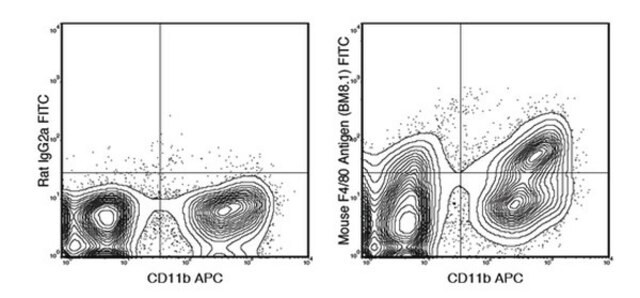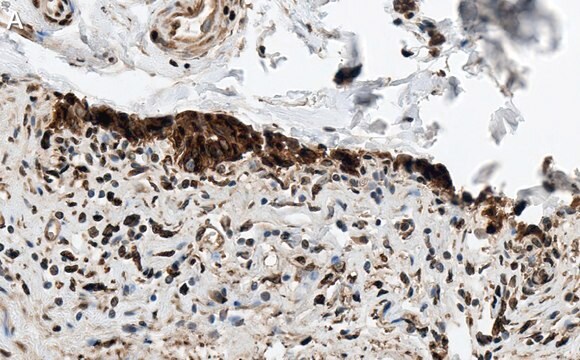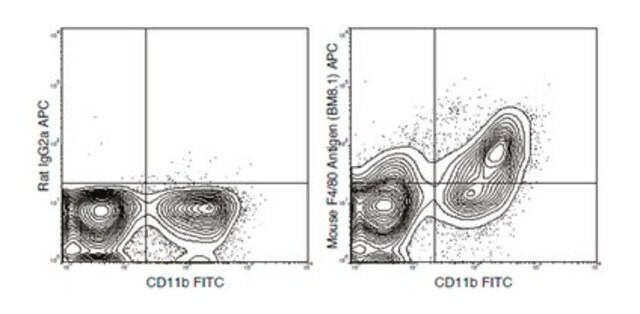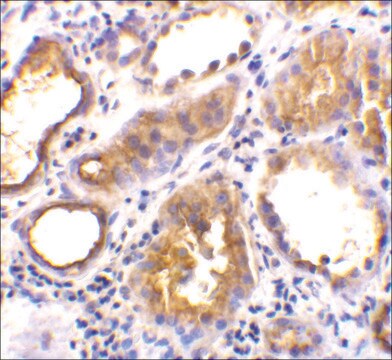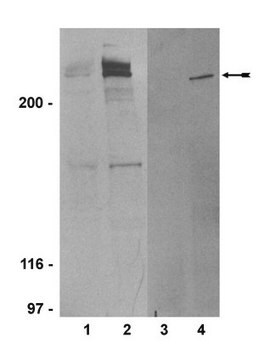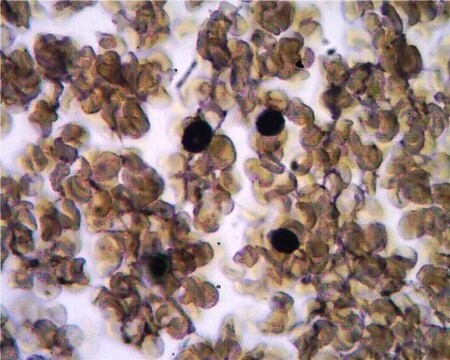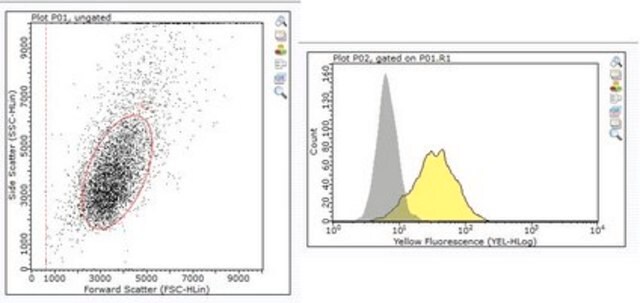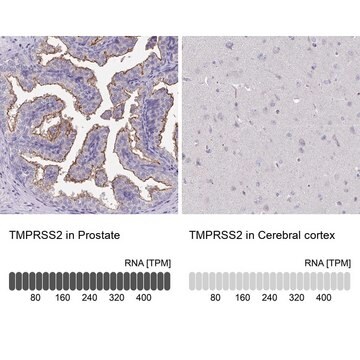MABS1955
Anti-mtHsp70 Antibody, clone JG1
clone JG1, from mouse
Sinonimo/i:
Heat shock 70 kDa protein 1A, Heat shock 70 kDa protein 3, HSP70.3, Hsp68, PBP74
About This Item
Prodotti consigliati
Origine biologica
mouse
Forma dell’anticorpo
purified immunoglobulin
Tipo di anticorpo
primary antibodies
Clone
JG1, monoclonal
Reattività contro le specie
human, mouse
Reattività contro le specie (prevista in base all’omologia)
hamster (based on 100% sequence homology)
Confezionamento
antibody small pack of 25 μL
tecniche
ELISA: suitable
immunocytochemistry: suitable
immunoprecipitation (IP): suitable
western blot: suitable
Isotipo
IgG3κ
N° accesso NCBI
N° accesso UniProt
modifica post-traduzionali bersaglio
unmodified
Informazioni sul gene
mouse ... Hspa1A(193740)
Descrizione generale
gradually deacetylated by HDAC4 at later stages. Its acetylation enhances its chaperone activity and determines whether it will function as a chaperone for protein refolding or degradation by controlling its binding to co-chaperones HOPX and STUB1. The acetylated form and the non-acetylated form are shown to bind to HOPX and STUB1, respectively. It contains four ATP-binding regions and its N-terminal nucleotide binding domain (NBD; ATPase domain) is responsible for binding and hydrolyzing ATP. Its substrate binding domain (SBD) is localized to the C-terminal region. When ADP is bound in the NBD, a conformational change enhances the affinity of the SBD for client proteins. (Ref.: Green, JM et al. (1995). Hybridoma 14(4); 347-354).
Specificità
Immunogeno
Applicazioni
Signaling
Immunocytochemistry Analysis: A representative lot detected mtHsp70 in Immunocytochemistry applications (Green, J.M., et. al. (1995). Hybridoma. 14(4):347-54; McCormick, A.L., et. al. (2005). J Virol. 79(19):12205-17).
Immunoprecipitation Analysis: A representative lot immunoprecipitated mtHsp70 in Immunoprecipitation applications (Green, J.M., et. al. (1995). Hybridoma. 14(4):347-54).
ELISA Analysis: A representative lot detected mtHsp70 in ELISA applications (Green, J.M., et. al. (1995). Hybridoma. 14(4):347-54).
Western Blotting Analysis: A representative lot detected mtHsp70 in Western Blotting applications (Green, J.M., et. al. (1995). Hybridoma. 14(4):347-54).
Qualità
Western Blotting Analysis: 1:500 dilution of this antibody detected mtHsp70 in MCF7-10A cell lysate.
Descrizione del bersaglio
Stato fisico
Stoccaggio e stabilità
Altre note
Esclusione di responsabilità
Non trovi il prodotto giusto?
Prova il nostro Motore di ricerca dei prodotti.
Codice della classe di stoccaggio
12 - Non Combustible Liquids
Classe di pericolosità dell'acqua (WGK)
WGK 2
Punto d’infiammabilità (°F)
Not applicable
Punto d’infiammabilità (°C)
Not applicable
Certificati d'analisi (COA)
Cerca il Certificati d'analisi (COA) digitando il numero di lotto/batch corrispondente. I numeri di lotto o di batch sono stampati sull'etichetta dei prodotti dopo la parola ‘Lotto’ o ‘Batch’.
Possiedi già questo prodotto?
I documenti relativi ai prodotti acquistati recentemente sono disponibili nell’Archivio dei documenti.
Il team dei nostri ricercatori vanta grande esperienza in tutte le aree della ricerca quali Life Science, scienza dei materiali, sintesi chimica, cromatografia, discipline analitiche, ecc..
Contatta l'Assistenza Tecnica.